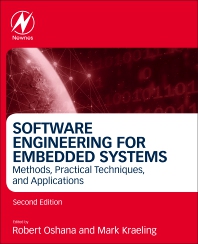Newnes
- 5th Edition
- Austin Hughes + 1 more
- English

Electric Motors and Drives
- 2nd Edition
- Robert Oshana + 1 more
- English

Software Engineering for Embedded Systems
- 1st Edition
- Theresa Schousek
- English

The Art of Assembly Language Programming Using PIC® Technology
- 1st Edition
- Dogan Ibrahim
- English

ARM-based Microcontroller Projects Using mbed
- 3rd Edition
- Paul Breeze
- English

Power Generation Technologies
- 2nd Edition
- Dennis Fitzpatrick
- English

Analog Design and Simulation Using OrCAD Capture and PSpice
- 4th Edition
- Doug Abbott
- English

Linux for Embedded and Real-time Applications
- 1st Edition
- Keith Brindley
- English

Newnes Electronics Assembly Pocket Book
- 4th Edition
- Peter Wilson
- English

The Circuit Designer's Companion
- 5th Edition
- Bruce Carter + 1 more
- English

Op Amps for Everyone